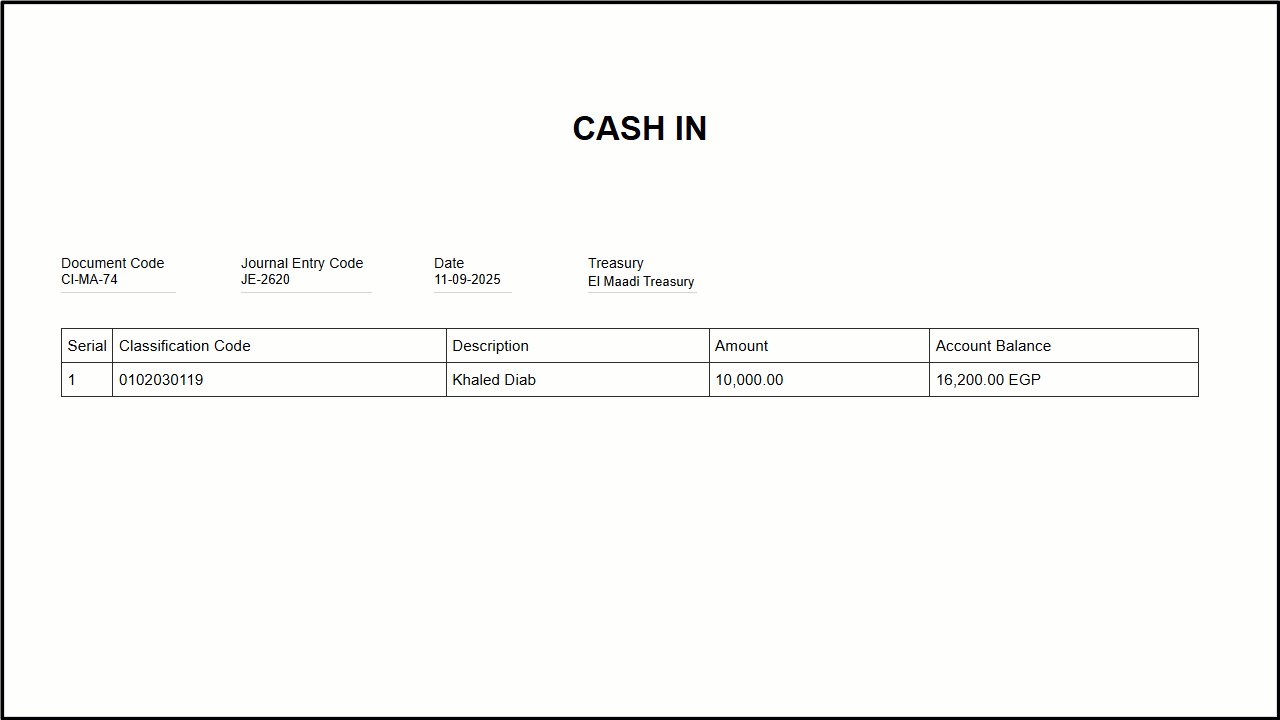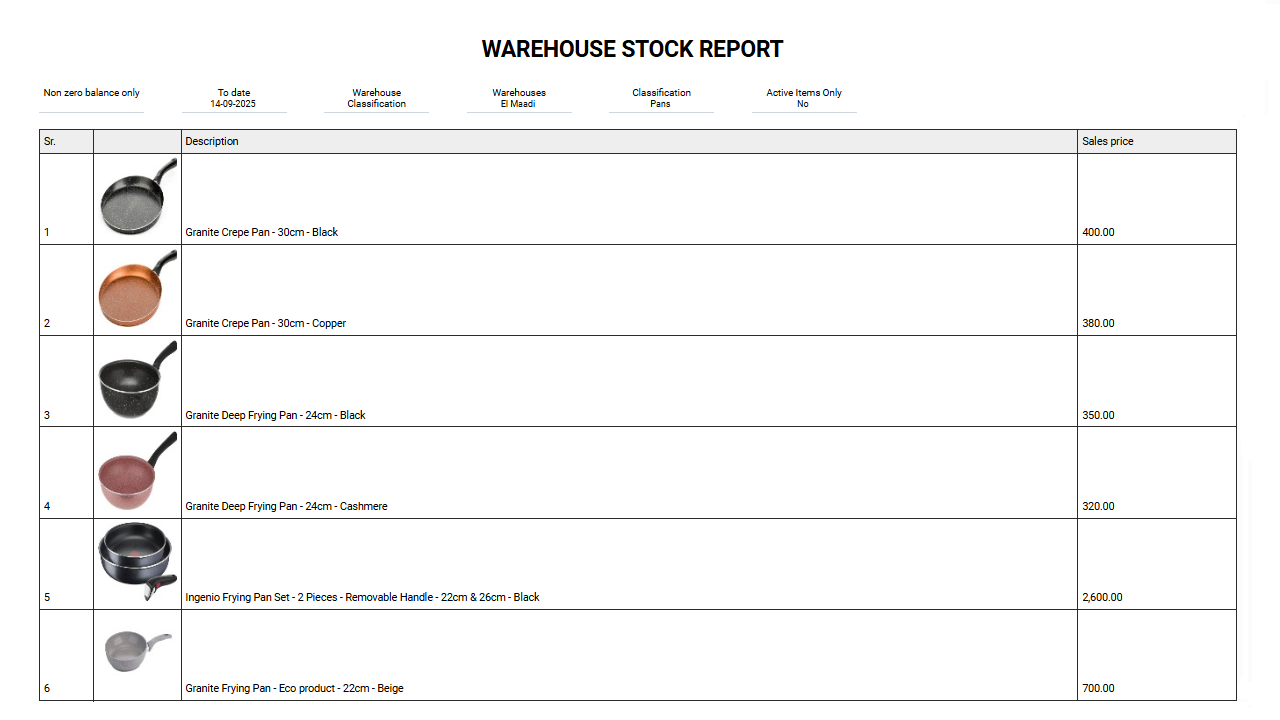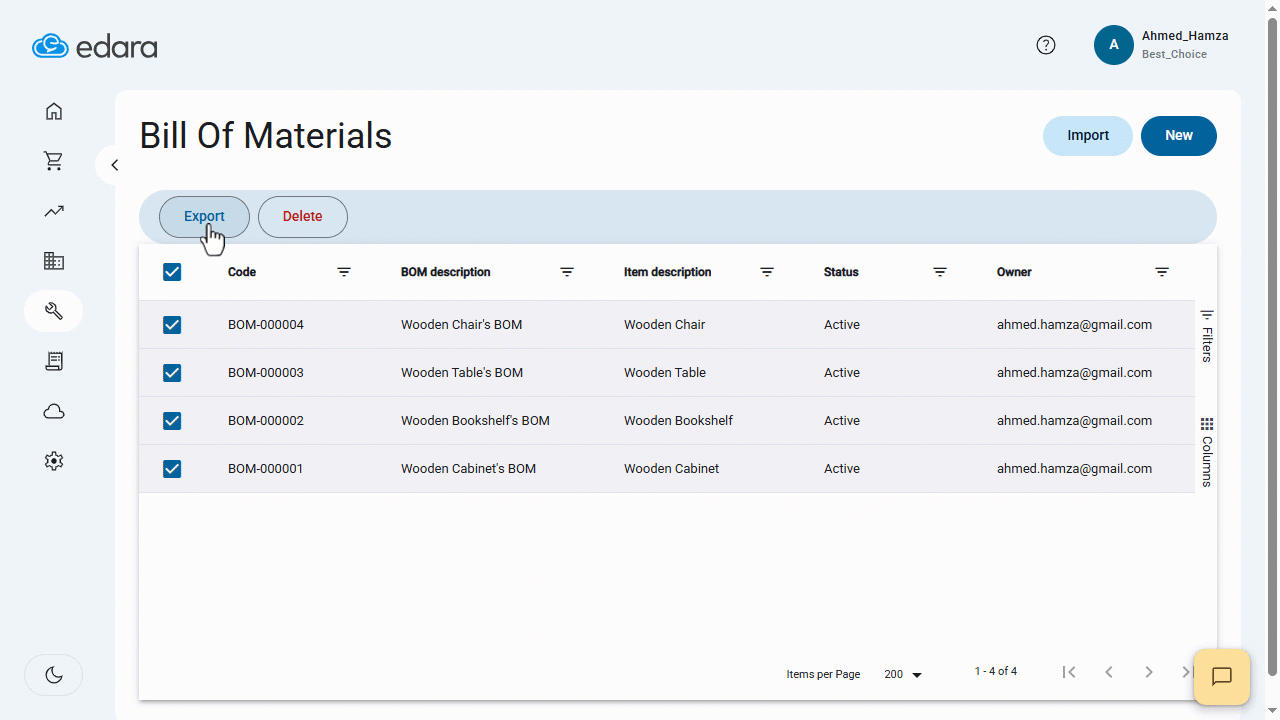For more than ten years, the company kept scaling, and the system remained a steady part of the operation—delivering real-time information, keeping workflows consistent, and absorbing each stage of growth without slowing it down.
Their journey wasn’t only about expansion. It was about choosing a platform that remained reliable as the business grew—one that kept up with the pace instead of holding it back.
Growth Challenges: When the Details Multiply and Visibility Becomes Critical
“Technology Valley”’s expansion didn’t simply mean more branches—it meant a sharp increase in the volume of details that had to be monitored every single day. With every new branch, the data multiplied, and the product range widened to include computers, laptops, hardware components, and electronic accessories. Each item carried a serial number that needed to be tracked accurately across multiple warehouses.
At the same time, frequent import shipments added new SKUs on a regular basis, making warehouse operations far more complex. This created an urgent need for a clear financial picture covering costs, expenses, shrinkage, income statements, budgets, and proper cost allocation across cost centers.
With an active online store in the mix, the challenge grew even further. In a fast-moving electronics market, any mismatch between system stock and website stock—or any delay in updating branch data—directly impacted the customer’s experience. A price difference or an unavailable item could instantly translate into a lost sale.
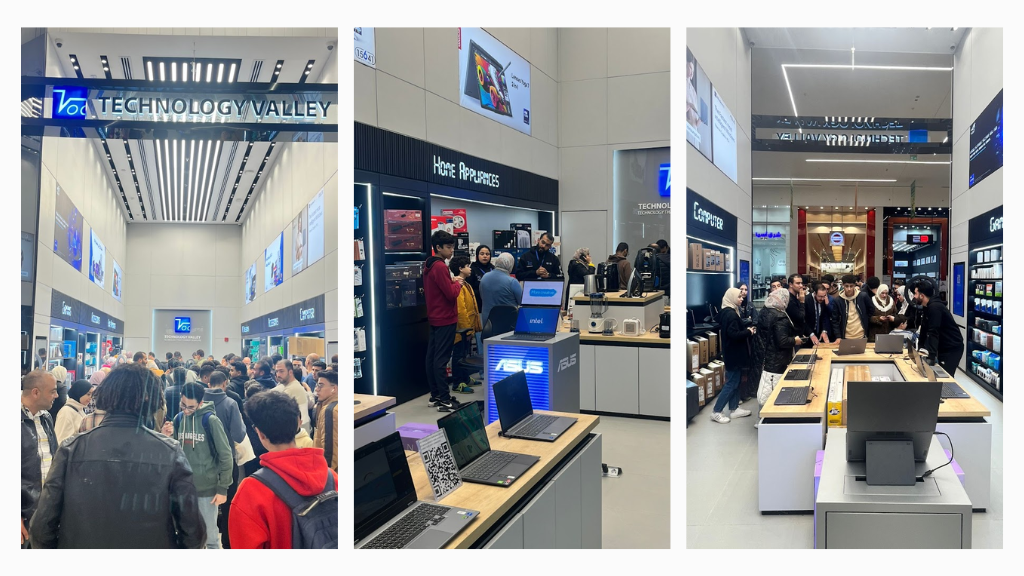
Amid all this growth, one critical question stood before management: Can the system remain reliable as the workload doubles, or will it become part of the problem?
A Stable Operating Backbone: How the System Supported a Business That Evolved Every Year
For more than a decade, “Technology Valley”’s continuity wasn’t driven by commercial expansion alone—it was built on an operational backbone that stayed clear and consistent, even as the scale of the business changed. Centralizing all branches under one system kept data unified and ensured accurate tracking of sales and inventory, no matter where transactions took place.
On the financial side, accounts, budgets, and income statements continued to run with steady rhythm, giving management the visibility they needed to measure performance and make confident decisions.
Warehouse operations—receiving, issuing, transfers, stock counts, and imports—formed a complex cycle that required a system capable of handling daily detail without overwhelming the team. And in a market where warranties and after-sales service depend heavily on product traceability, serial-number tracking was non-negotiable. The system delivered this with precision, managing thousands of serials across multiple branches and warehouses seamlessly.
What the company needed was a system that could absorb growth without restricting it—a platform that remained clear, reliable, and scalable as data increased year after year.
That is exactly what “Edara” provided.
Multi-Channel Integration: Branches, Online Store, and ETA in One Flow
As “Technology Valley” expanded across multiple sales channels, unified data became essential for keeping operations efficient. The business no longer ran through branches alone; a busy online store was receiving orders every day and required real-time stock levels and pricing—without any mismatch between the system and the website.
Through direct integration between the e-commerce platform and “Edara”, stock movements flowed automatically between both sides. Every online sale was recorded instantly, and every inventory update appeared on the website in real time, ensuring a consistent buying experience whether the customer shopped in-store or online.
The integration with the ETA also streamlined compliance with government requirements, making invoice issuance and synchronization a natural part of the daily workflow—without any extra steps or disruptions.
Operational and Financial Tools That Reinforced Accuracy and Stability
“Technology Valley” relied on a set of built-in tools that strengthened both operational precision and financial control.
The Dormant Accounts report helped the management team identify customers with no recent activity and improve their collection cycle. The company also leveraged customizable barcode printing, which made it easier to organize a wide variety of products across branches.
In warehouse management, the team used controlled warehouse visibility within the stock balance report—allowing branches to view their own available stock while hiding the quantities stored in the main warehouse. This was especially useful during import periods when large shipments had arrived but had not yet been distributed, keeping incoming quantities confidential while maintaining operational clarity for each branch.
They also utilized the Fixed Assets–Cost Center linkage, which enabled precise tracking of each asset’s location and automated posting of depreciation based on the responsible branch. In addition, Collection Fee settings improved financial accuracy by clearly defining the fee percentage, who bears it, and reflecting the final payable amount directly on printed documents.
Together, these operational and financial tools elevated discipline across the organization, delivering accurate, reliable data that supported informed and confident decision-making.
What Does It Mean for a System to Scale as the Business Expands?
This stability wasn’t the result of a rigid system—it came from an operating foundation that evolved in parallel with the company’s growth and adapted as new realities emerged. The system wasn’t just a tool for running day-to-day operations; it became part of the company’s core structure, expanding steadily to absorb more data and more complexity year after year.
Real growth doesn’t happen by switching to a new system every time the business expands. It happens when the system itself grows with the company—neither ahead of it nor behind it.
And that is what shaped “Technology Valley”’s journey: a path of consistent expansion, where daily operations ran confidently, and decisions were built on visibility that stayed clear no matter how large the business became.
]]>The problem wasn’t the product.
It was the information.
At that moment, Mr. Ahmed, owner of “Kandil Tires“, realized that slow access to data meant slow sales, missed opportunities, and sometimes a lost customer.
That was the turning point — and the beginning of “Kandil”’s shift to “Edara”, a system built not just to store data, but to make it available the moment it’s needed.
About “Kandil”: Expertise Built on the Road
For years, “Kandil” has been a steady name in the tire and battery market — a business built on reliability, practical experience, and attention to detail.The company offers a complete customer journey: a wide range of tires and batteries, supported by professional installation and maintenance services at its main service center.
With multiple branches across different cities, “Kandil” has grown into a trusted reference in its field — known for quality, fast service, and a customer relationship that strengthens with every sale.
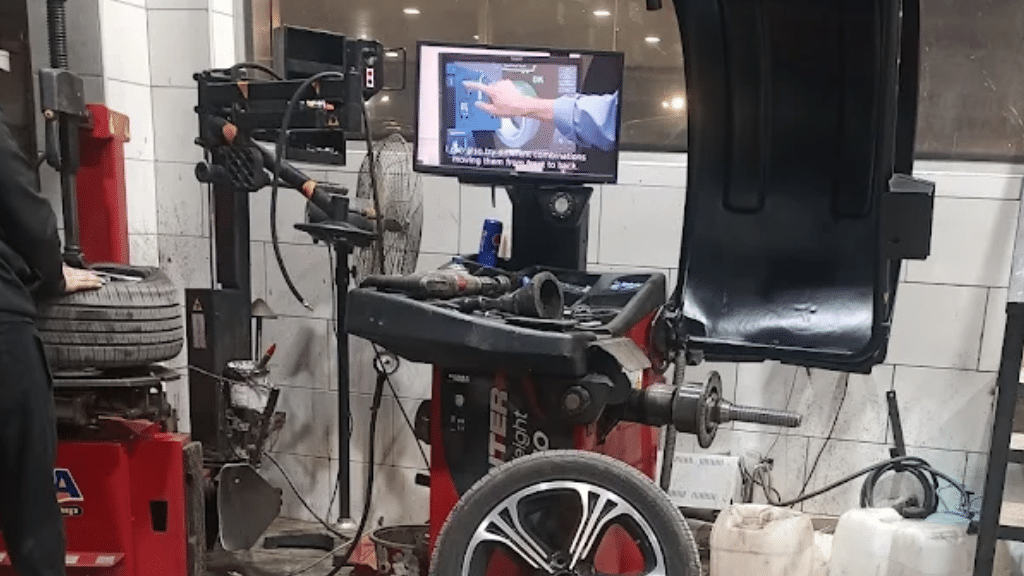
The Challenge: High Variety, Higher Need for Accuracy
In the tire and battery business, every detail matters — size, production year, country of origin, and even shelf life can influence a customer’s final decision.
As “Kandil” expanded and opened more branches, tracking all these details became increasingly difficult with a traditional, limited desktop system.
The old setup could no longer keep pace with daily operations. Accessing information required being physically present at the main branch, while “Kandil” needed instant, unified visibility across all locations — anytime, anywhere.
The Solution: One Cloud System Connecting Every Branch
Switching to “Edara” transformed “Kandil”’s operations. What used to function as separate islands suddenly became a single, synchronized network. Every sale, transfer, or service operation is now recorded instantly and reflected across one unified database, giving management real-time visibility over stock levels and branch performance.
With immediate cloud updates, decisions are made faster, tracking becomes more accurate, and the workflow inside the service center runs with far more consistency and ease.
A Standout Feature: Smarter, More Accurate Batch Tracking
In a market where products look similar but differ in critical details, distinguishing between batches isn’t a luxury — it’s essential.
This is where “Edara”’s Batch Number feature became a key advantage for “Kandil”. It allowed the team to link each item to its exact production date and expiry information, and track every batch across all branches in real time.
Instead of navigating files or calling each branch separately, the sales team can now run a single search and instantly see available quantities, brands, sizes, production years, and the exact branch where each batch is stocked.
Minutes of searching turned into seconds of clarity and speed.
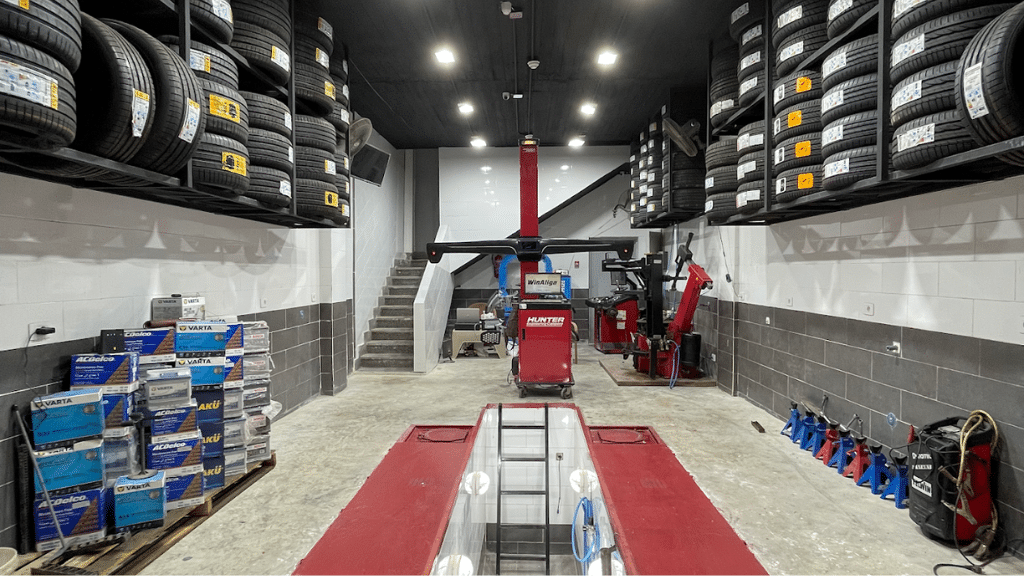
Shopify Integration: One Seamless Selling Experience
With the integration between “Edara” and Shopify, online sales are no longer a separate workflow for “Kandil” — they operate as part of one unified process.
Every update in “Edara” — whether it’s pricing, stock quantities, or order status — is instantly reflected on the online store. And the moment a sale happens at any branch, the website updates automatically, giving customers accurate, real-time availability.
This smooth synchronization created a consistent buying experience across all channels, where every platform speaks the same data language — no delays, no mismatches, just precision in every transaction.
From Service to Finance: One Connected Workflow
In “Edara”, sales and installation are no longer separate steps — they flow together as part of a single, unified financial cycle.
Every action, whether it’s selling a product or performing an installation at the service center, is automatically recorded under the right revenues, expenses, and cost centers.
This level of integration gives management real-time financial visibility, making it easy to understand the exact impact of each operation on overall performance.
Today, every detail counts — and every number feeds directly into a clear, comprehensive financial report that reflects the true state of the business.
Conclusion: Faster Responses, Smarter Decisions
“Kandil”’s journey from a limited desktop setup to a cloud-based ecosystem marked a true step into digital transformation.
Information is no longer something the team has to search for — it appears instantly, accurately, and at the exact moment it’s needed.
With “Edara”, “Kandil” now has a complete view of its operations and can respond to every customer with confidence, making decisions at the speed that truly matters.
]]>
Since 1960, the company has built a fragrant legacy defined by refined taste and timeless presence, becoming a distinguished brand in the world of luxury perfumes.
As its branches expanded and its online store flourished, Olayan took a bold step toward digital transformation — where data flows as seamlessly as its signature scents — beginning a new chapter of precision and innovation with “Edara”.
About “Olayan”: Six Decades of Authenticity and Innovation
For more than sixty years, “Olayan Perfumes & Flowers” has stood as one of Saudi Arabia’s most distinguished names in the world of luxury fragrances.
The company offers a refined blend of original and inspired perfumes, crafted with exceptional quality and backed by trusted guarantees — delivering experiences that embody elegance and sophistication.
With its expanding network of stores across the Kingdom and a rapidly growing online presence, Olayan has become a destination where heritage meets innovation, offering a seamless and elevated shopping experience for every fragrance lover.
The Challenge: Connecting Stores and the Online Experience
As “Olayan” expanded and introduced thousands of products — from original to inspired fragrances — achieving seamless integration between physical stores and the online shop became essential.
The previous system lacked this connection: inventories were isolated, and orders were processed manually, increasing the risk of errors and delays.
The real challenge was to establish a direct integration with WooCommerce, creating a unified ecosystem where sales, inventory, and accounting operate in perfect harmony — allowing data to move effortlessly between the online store and physical branches.

The Solution: A Complete Integration that Connects Everything
“Edara” delivered a full integration with WooCommerce, transforming Olayan’s branches and online store into one unified, fully synchronized system.
- Real-time inventory synchronization between the ERP and WooCommerce ensures that stock levels displayed online always reflect actual availability.
- Automatic order registration allows online purchases to flow directly into the system, linking each order to the customer, branch, and delivery process.
- Unified product codes and naming across all channels eliminate data duplication and confusion during expansion.
- Accurate tax-inclusive pricing mirrors WooCommerce values precisely, with consistent tax calculations inside Edara.
With this integration, the entire business cycle — from browsing to checkout, and from inventory updates to financial records — now runs as one seamless, transparent journey within a single system.
Data Accuracy: The Foundation of Every Digital Success
In the world of fragrances, where names can sound alike and categories often overlap, data accuracy is the cornerstone of true digital success.
Before activating the integration, the Edara team collaborated closely with Olayan to cleanse and standardize data across all stores and the online platform, ensuring perfect alignment between every sales channel.
Products, inventory, and suppliers were carefully reviewed until the entire system operated in full harmony — each item with one identity, each transaction with one source of truth.
This laid the groundwork for a stable, precise, and scalable digital experience that continues to support Olayan’s growth with confidence.
Accurate Tax-Inclusive Pricing — Down to the Last Detail
Since all prices on WooCommerce are displayed as tax-inclusive, Edara introduced a precise mechanism to ensure perfect alignment across systems — with no duplication, mismatches, or manual adjustments.
When an order is recorded, the system automatically breaks down and calculates the tax value, displaying the total price, net price, and tax percentage in full compliance with accounting standards.
The result is consistent pricing across all channels, clear tax reporting, and stable financial records that reflect the true business performance with complete accuracy.

Remote Implementation, Seamless as On-Site
Although the entire implementation was carried out remotely from Saudi Arabia, the process was as smooth as if the Edara team were working right inside Olayan’s offices.
Branches were configured, and staff were trained through interactive online sessions, with close supervision at every stage of the setup.
From day one, the team was fully capable of tracking sales, analyzing profits, and generating financial statements with confidence and speed.
This experience proved that successful digital transformation isn’t about location — it’s about a well-built system and responsive support that make every step clear, efficient, and easy to execute.
A Legacy of Elegance, Reimagined for the Future
From a fragrance heritage spanning over sixty years to a unified digital ecosystem that connects stores and the online shop in perfect harmony, Olayan has seamlessly blended tradition with innovation in a refined and modern operational experience.
Today, modern management is no longer a departure from heritage but a continuation of it — where technology preserves the brand’s identity while adding precision, elegance, and efficiency that honor its distinguished past and pave the way for a confident, expansive future.
]]>In this article, we’ll explore these updates in more detail.
Selecting the Warehouse Stocks Report Type
Different users have different needs when viewing warehouse reports. Some prefer a comparative view across warehouses, while others need a detailed breakdown for each stock item or a summarized structure that’s easier to analyze.
That’s why Edara now allows you to choose the report type that best fits your needs: Horizontal for comparing warehouses, Vertical for detailed stock item tracking, or Tree for grouped, category-based data.
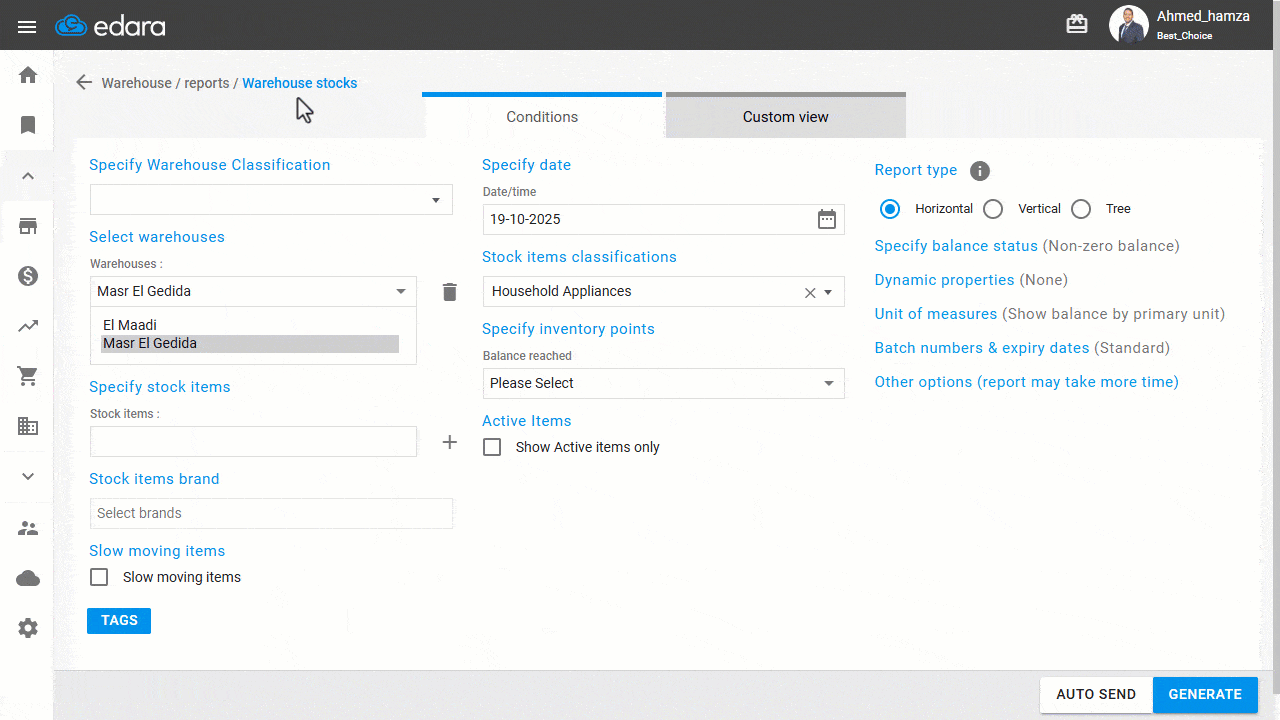
Display Bank Fees Payer and Total Paid
On the Proposed Payment page within the Sales Order, the party responsible for the bank collection fees — whether the customer or the company — is now clearly displayed, along with the total amount paid, and the collection fee percentage and its value.
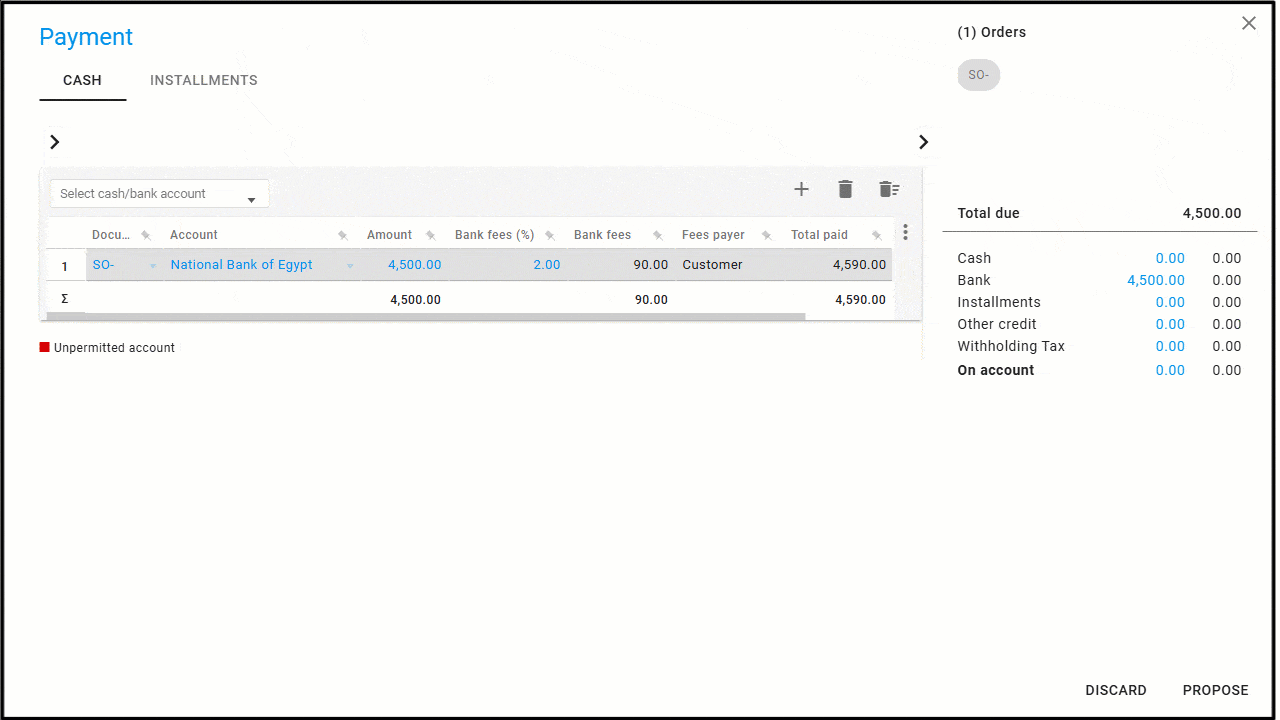
Display Bank Fees and Total Paid in the Print Template
When printing, you might need to display the bank collection fees and the total amount deducted from the customer when they are responsible for these fees.
With this update in Edara, you can now show these details in the sales order Print Template.
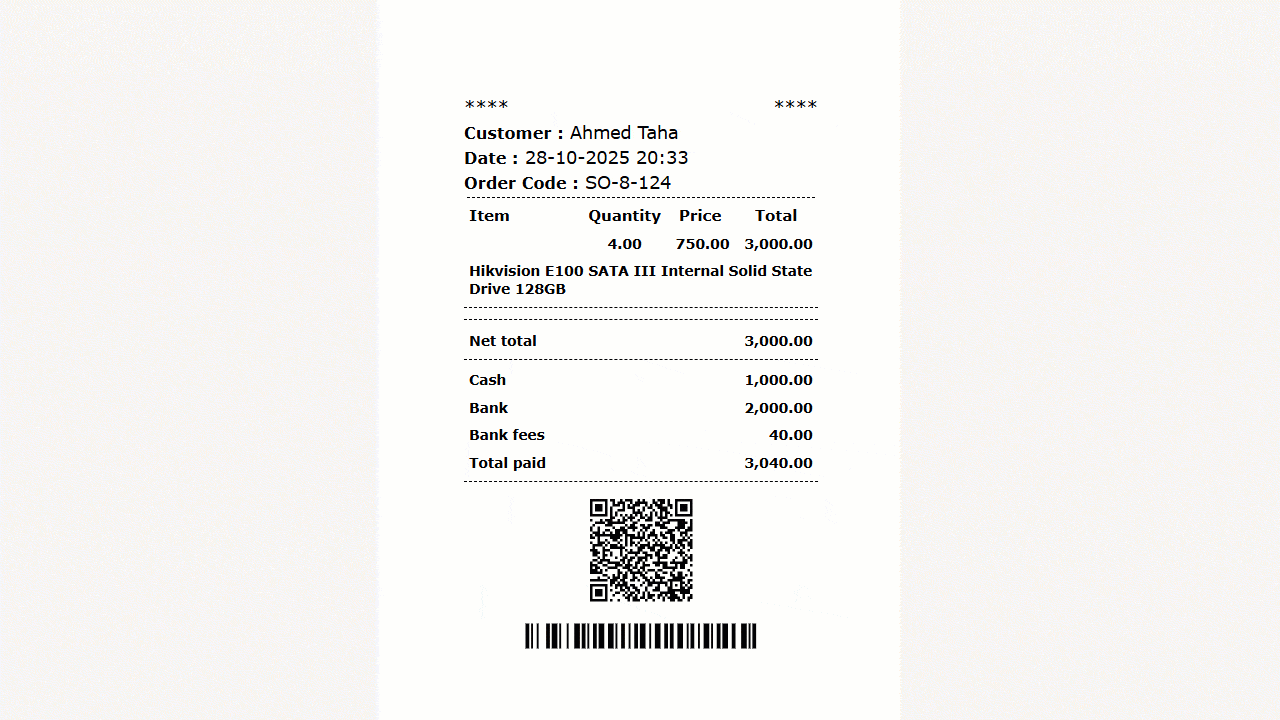
Exporting Sales Orders from the E-Invoice Integration Page
When reviewing or reconciling sales orders with the E-Invoice Portal, you no longer need to process each page individually.
With this update in Edara, you can now export documents more flexibly — whether you choose to export only those visible on the current page or all pages at once in a single action.

That was all for Edara’s November 2025 updates — and our improvements are still ongoing.
]]>Inside a busy electronics mall, a sales representative searched for a printer among dozens of nearly identical models. The only difference was a small serial number—yet it was the key to identifying the exact product with complete accuracy.
At that moment, “El Shorouk” realized it needed a system that could manage details as clearly and precisely as the human eye sees them. That realization marked the beginning of its journey with “Edara”, towards a more organized and transparent operation.
Expertise in Printing, Vision in Management
Since its establishment, “El Shorouk” has built a solid reputation as a trusted partner in the printing industry, providing integrated solutions for POS systems and smart printers used in restaurants, retail stores, and fashion outlets.
As the business expanded and new branches opened, precision was no longer needed in printing alone, but in managing operations as well.
That’s where “Edara” came in — giving the company the same level of accuracy and control in its data that it delivers to its customers in every print it produces.
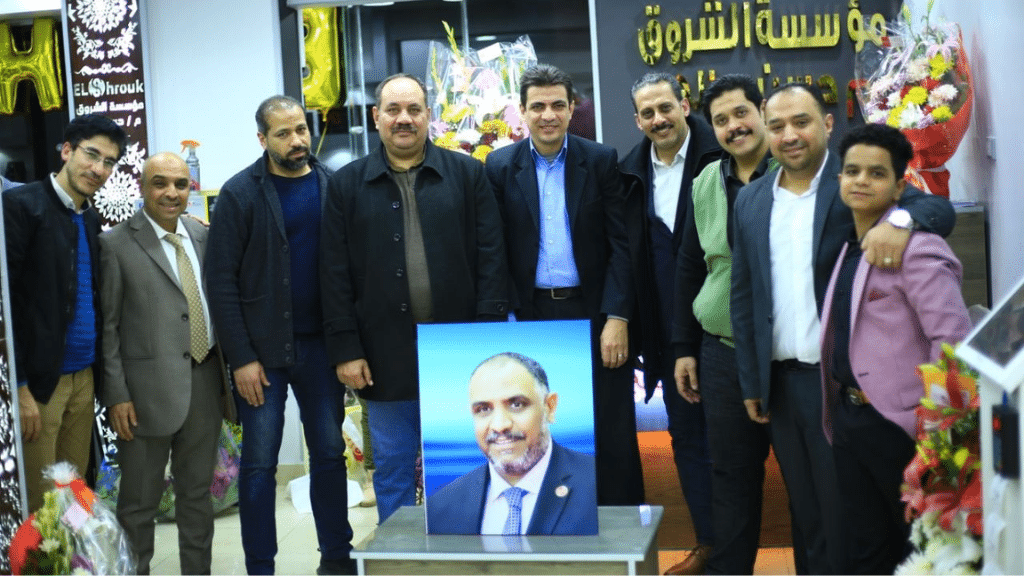
When the Serial Number Becomes the Key
With so many similar models and frequent product updates, the serial number became the key to ensuring accuracy in every sale.
With “Edara”, the serial number is no longer a long string of digits that requires manual checking — it’s now a smart search tool that helps the team find any product by typing just a few characters.
And because a picture can often say more than words, “El Shorouk” chose to display product images directly in sales orders and stock reports.
The result? No more confusion between models, and every sale is as precise as if it had been printed before it even happened.
Connecting Branches Through Unified Data
Distance no longer separates “El Shorouk” branches — with “Edara”, they now operate as one fully connected omnichannel network.
Every sale or purchase is recorded instantly and updated in the central system, allowing data to flow seamlessly between branches — from suppliers to invoices, and from stock movements to financial reports.
In just a single view and at any moment, management can see the complete picture of operations without waiting or relying on manual data consolidation.
Fast Implementation, Zero Learning Curve
Thanks to its strong technical background in IT, “El Shorouk” was among the fastest companies to implement and start working with “Edara”.
Its expertise in printers and technical systems made it easy for the team to navigate the platform and get started without long training sessions or complex setup steps.
In no time, the entire workflow — from serial number registration to report review — was running smoothly, allowing the team to see real results quickly, without a learning curve slowing them down.
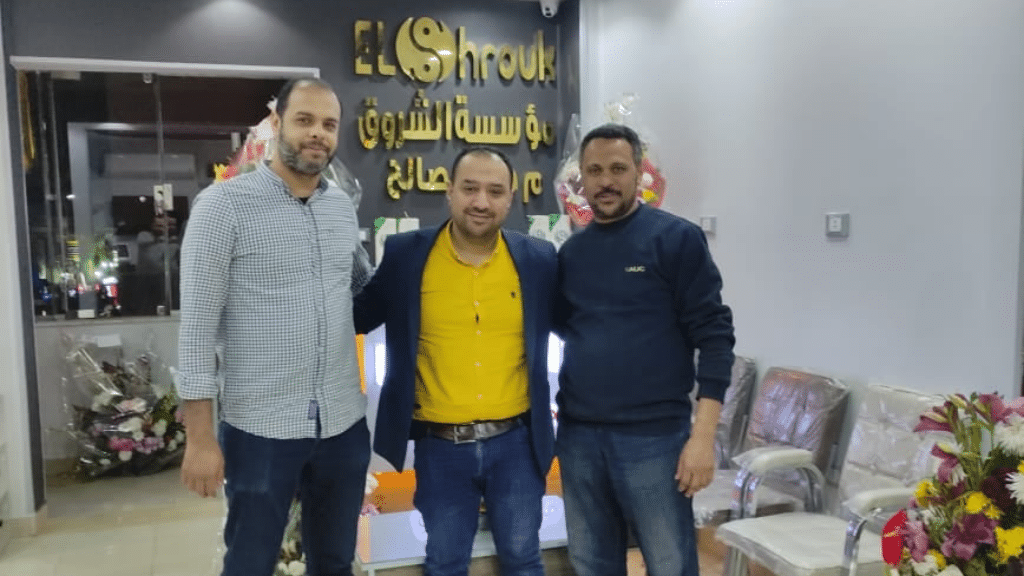
In Conclusion: Operational Precision That Matches Printing Accuracy
Just as printing demands clarity in every detail, “El Shorouk” now manages its operations with the same level of precision and flow.
With “Edara”, everything comes together in one system — from devices to reports, and from branches to accounting — powered by accurate data and faster decisions.
Today, “El Shorouk” stands as a model of organized operations, transparent performance, and unwavering trust — printed in every transaction.
]]>Every new branch, supplier, and transaction adds another layer of complexity that demands a system capable of unifying data and providing complete control over every detail.
Amid this expansion, “El Hegaz” faced a common challenge for growing businesses: how to maintain accuracy and clarity as data volumes and operations multiply.
The answer came with “Edara”, a cloud-based ERP system that brought everything together — connecting branches, warehouses, and accounts into one organized and transparent workflow.
The Challenge: Growing Data and Overlapping Details
As “El Hegaz” expanded its branches and diversified its suppliers and product range, the amount of data grew beyond what manual processes could handle.
Sales, inventory, and import operations began to overlap, turning daily details into a burden that slowed performance and increased the risk of error.
Each invoice or stock movement required separate review, consuming valuable time and effort.
It became clear that the company needed a unified system — one that connects every operation in a single, seamless workflow and transforms scattered data into a clear, actionable view of the business.
The Solution: “Edara” as a Unified System for Data and Operations
With “Edara”, “El Hegaz” achieved a fully connected and transparent workflow.
Every item now carries a unique digital identity tracked from import to final sale through its serial number and barcode.
The days of manual searches and estimates are gone — every movement is accurately documented within the system, from inter-branch transfers to routine inventory checks.
The result was clear: more accurate data, reduced waste, and complete control over stock movement across all branches.
Linking Salespersons to Customers: A Clearer View of Performance
With “Edara”’s feature that links each salesperson to their customers, every sale now has clear accountability and context.
Reports are no longer just total figures — they provide detailed insights into each salesperson’s performance and the value of their client relationships.
This level of transparency gave management deeper analytical visibility, enabling them to reward top performers, address challenges early, and turn sales reports into tools for growth rather than just records of activity.
Imports and Costing: Accuracy That Starts from the First Invoice
With “Edara”, import operations became more organized and transparent than ever before.
Every cost — from shipping and customs to banking fees and additional expenses — is automatically recorded and precisely allocated to each imported item within the system.
This gave management a clear view of the true cost of every product, allowing for more accurate pricing and profitability analysis.
The outcome: precise accounting, smarter pricing decisions, and a complete financial picture that covers the entire journey from import to sale.
Financial Reports: Complete Transparency and Continuous Insight
“Edara” provided “El Hegaz” with a fully integrated accounting structure built on transparency and precision in every detail.
Through consistent financial reports — including income statements, trial balances, and monthly summaries — management can now monitor financial performance instantly and clearly.
Every figure in these reports is drawn directly from real operational data, making “Edara” a trusted accounting reference, a reliable source for accurate financial decisions, and a key tool for evaluating performance and sustainable growth.
In Conclusion: A System That Manages the Details and Frees Time for Growth
The journey of “El Hegaz” with “Edara” marked a turning point in how the company operates.
Instead of manual tracking and constant verification, the system now handles every detail with precision, providing real-time visibility across all departments.
Today, the team is no longer occupied with fixing errors or chasing data — their focus is on growth and development, while “Edara” ensures accuracy, discipline, and seamless control at every stage of the workflow.
]]>In Assiut, “Rana Stores” was expanding across several sales points, including fixed branches and distribution vehicles, and needed a smarter way to bring everything together.
That was when “Edara” stepped in. As a cloud-based ERP, it provided the company with complete visibility, instant control, and the confidence to keep growing while maintaining full focus.
About “Rana Stores”: Bridging Wholesale and Retail in Mobile Trading
“Rana Stores” is one of Assiut’s leading mobile retailers, combining two distinct sales models: fixed branches that serve walk-in customers and distribution vans that operate as mobile warehouses for wholesale clients.
This hybrid model gave the company remarkable flexibility to reach a wide range of customers, yet it also created a key challenge—the need for a unified system that could manage both wholesale and retail operations seamlessly within one workflow.
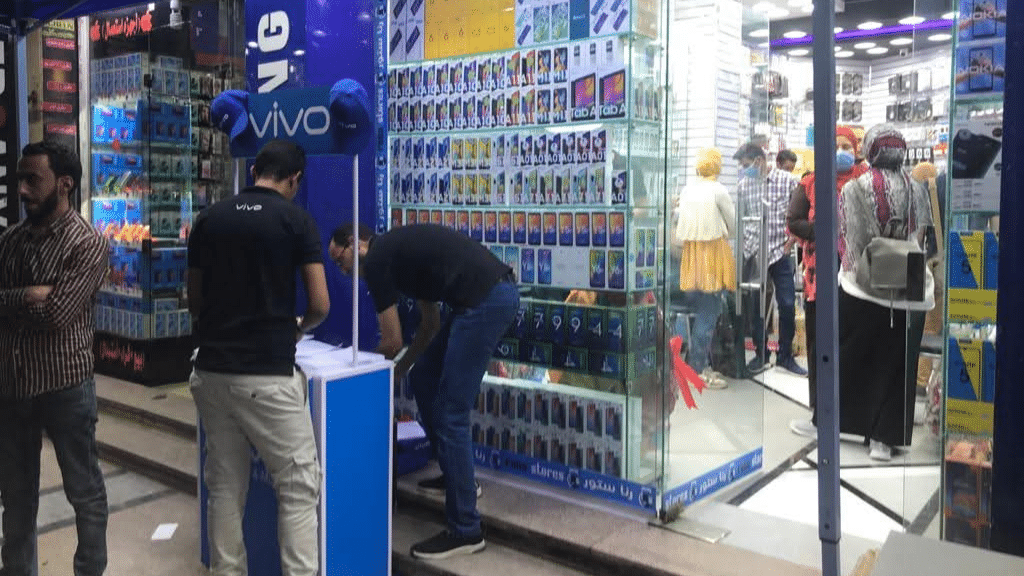
The Challenge: Managing Sales Across Branches and Mobile Units
For “Rana Stores”, the challenge went far beyond tracking sales from a single branch. The company had to manage an entire network that included the physical stores and several distribution vans functioning as mobile warehouses.
Each sales point, whether a store or a vehicle, required accurate tracking of stock levels, sales, returns, and profits—both on an individual level and as part of the overall business performance.
Without a centralized system, data could easily overlap or go missing, resulting in reporting gaps and unreliable financial insights.
The Solution: One System Connecting Every Branch and Mobile Warehouse
With “Edara”, all “Rana Stores” branches and distribution vans were brought together into one connected network.
Every sale is recorded in real time, and every return is instantly updated in the correct location, ensuring that profits are calculated accurately for each sales point while still contributing to a unified operational and financial overview.
What was once a complex web of disconnected processes became a single, streamlined workflow that gave management full visibility and control over every part of the business.
Serial and Barcode Tracking: Accuracy You Can Trust
In the mobile retail business, even a single tracking error can lead to losses or customer dissatisfaction.
With “Edara”, every device is tracked through its unique serial number from the moment it enters the warehouse until it reaches the customer. The system also enables automatic barcode generation and printing, which can be applied across sales, purchase, and transfer processes.
This streamlined approach made operations faster and more accurate, minimized manual entry, and gave the team complete confidence in every transaction.
Balance Transparency: A Small Feature with a Big Impact
It might seem like a minor detail, but it made a significant difference. With “Edara”, each customer’s balance now appears directly on the printed receipt, both before and after the transaction.
This simple enhancement added a new level of transparency to every sale. Customers immediately understand their financial position, while management can track accounts with greater precision. The outcome is clear: stronger trust, fewer inquiries, and smoother daily operations.

Expanding South: Seamless Operations and Reliable Support
Distance was never an obstacle to success for “Rana Stores”. Even with operations based in Assiut, implementation and training with “Edara” ran smoothly, proving that dependable support is available anywhere across Egypt.
By connecting fixed branches and mobile distribution units under one unified operational and financial system, “Rana Stores” gained full visibility and control over every process.
“Edara” was more than just software; it became a trusted growth partner that empowered the company to expand with confidence and efficiency.
“Frillu”, a brand specialized in women’s fashion, faced this early on. With multiple branches and a growing online store on “Shopify”, the need for one system to bring everything together became urgent.
That’s when the journey with “Edara” began — a cloud-based ERP that unified their data, streamlined operations, and made every step from purchase to delivery — more efficient and transparent.
About “Frillu”: A Women’s Fashion Brand
Founded in Egypt in 2014, “Frillu” began as a women’s fashion brand and quickly evolved into a unique online shopping platform designed to suit every style and occasion.
By combining physical branches with a seamless “Shopify”-powered online store, Frillu offers women everything they need — from everyday essentials to standout pieces — all in one fast and convenient experience.
With customer comfort at the heart of its mission, the brand focuses on product variety, attention to detail, and a support team that’s always seeking better, smarter ways to serve. As the business expanded, the need for a centralized system to align operations and ensure data consistency became critical.
The Challenge: Disconnected Data and Lack of Clarity
As “Frillu” expanded across physical branches and its online store, a real gap emerged in its operations: data was not synced, inventory updates required manual input, and orders were sometimes duplicated — resulting in delays and potential errors at every step.
This directly impacted the customer experience: Is the item actually in stock? Was the order registered correctly? As sales activity increased, the need for a unified system became urgent. One that offers real-time accuracy and connects both store and branches within a single, end-to-end operating cycle from order to delivery.
The Solution: Seamless Integration with “Shopify” Simplifies Every Step
By directly integrating “Edara” with the “Shopify” store, operations shifted from repetitive manual entries to a streamlined and interconnected workflow.
Orders are now recorded automatically in the system without duplication or manual input, while inventory levels are updated in real-time, ensuring that the quantities displayed on the online store are always accurate.
Even pricing is now consistent across both platforms, delivering a smooth and unified shopping experience whether customers buy from a branch or online.
The result? A single system that provides accurate data, reduces administrative effort, and builds customer trust at every step of the purchasing journey.
Inventory Control: Displaying Only Ready-to-Sell Items
The online store no longer reflects the company’s total inventory. Only the quantities that are actually ready for sale.
Thanks to the ability to link specific warehouses to the online store, “Frillu” can now exclude returned items or stock that’s still being processed, and focus solely on displaying packaged, ready-to-ship products.
The result? A more accurate and transparent shopping experience for customers, and greater control for the management over the online sales cycle — ensuring that only available stock appears on the website.
Efficient Operations: Sell and Dispatch in One Step
The operational tools in “Edara” helped “Frillu” speed up workflows and simplify processes. Instead of entering each order individually, sales orders can now be dispatched in bulk using the consolidated dispatch feature with the ability to assign a responsible team member for each transaction.
As a result, the team saved valuable time, operational errors were minimized, and the workflow between branches and warehouses became smoother and more efficient.

Accounting in Control: Real-Time Financial Visibility
Accounting is no longer isolated from day-to-day operations. With “Edara”, every sale, purchase, or cash transaction is automatically recorded in the system and instantly reflected across financial reports from the income statement to the balance sheet.
Instead of relying on manual spreadsheets, “Frillu” now operates a fully integrated financial cycle, providing the management team with real-time visibility into profits and costs enabling faster, data-driven decision-making.
In Conclusion: Seamless Integration, Hassle-Free Operations
“Frillu”’s experience with “Edara” proved that smooth growth is only possible with true integration between physical branches and online platforms.
A single system — connecting “Shopify”, inventory, and accounting — brought greater fluidity to operations, empowered the team to track every detail, and enabled smarter, faster decisions. With this foundation, “Frillu” is now well-prepared for its next phase of expansion confidently and sustainably.
]]>In this article, we take a closer look at these updates in detail.
Showing Item Description on a Separate Line
Long item names can sometimes wrap across multiple lines in the same row when printing receipts, making them harder to read and taking up unnecessary space.
With this update in Edara, you can display the item description on a separate line in receipt templates, with an automatic separator added between items. This makes receipts clearer, more organized, and easier to read.
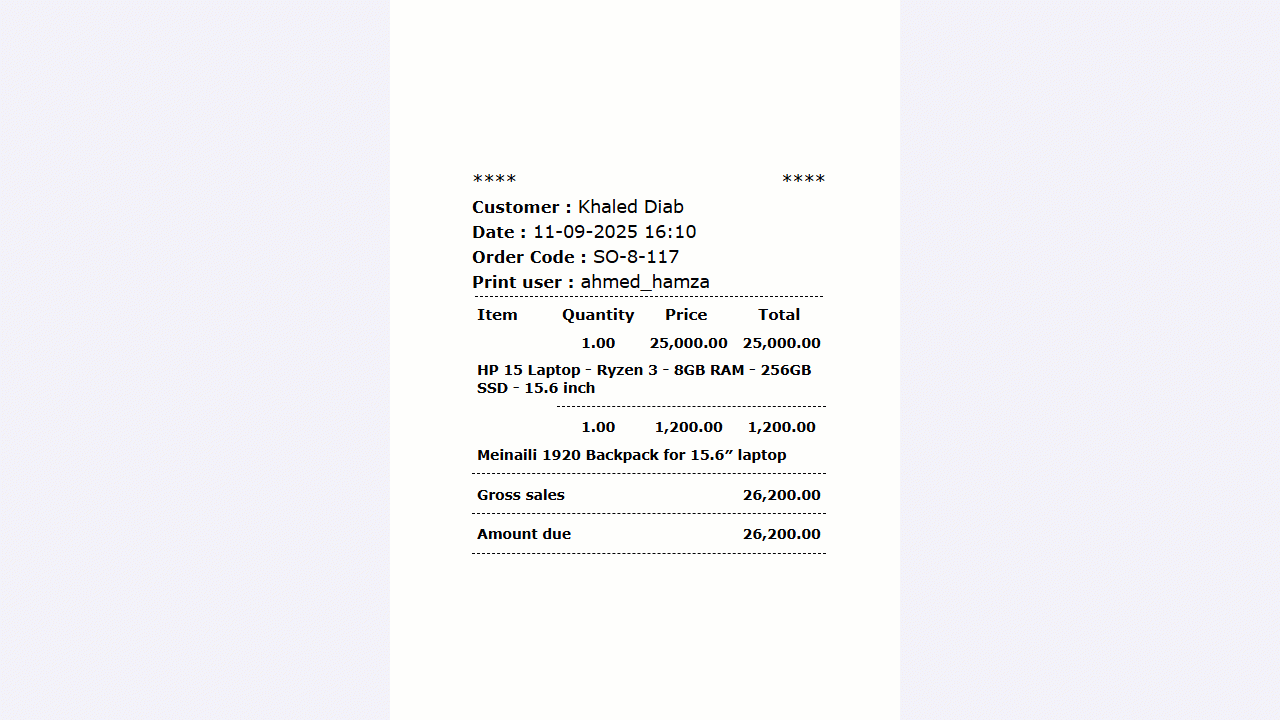
Display Account Balance on Printed Cash Documents
Customers or suppliers may need to see their current balance immediately after a cash transactions.
With this update in Edara, the account balance can now be displayed automatically on printed cash documents (Cash in or Cash out), along with the system currency international code.
This addition makes it easier to track balances accurately and provides customers and suppliers with greater transparency in their financial transactions.
Print Stock Item Images in the Warehouse Stock Report
In fields like household goods or apparel, it can be difficult to distinguish between items by name alone.
With this update in Edara, you can now print the Warehouse Stock Report with item images displayed alongside prices and other details, based on the images already added in the item’s master data.
This makes reports clearer, easier to review, and reduces the risk of confusion between similar items.
Export Bill of Materials to Excel
When you need to review or analyze Bills of Materials, Edara now lets you export them all into a well-structured Excel file that includes every detail, such as material costs and other costs. Each Bill of Materials is separated within the file, making review much easier.
Selecting Item Code Generation Method
You now have more flexibility when auto-generating item codes in Edara. You can either let the system follow its internal sequence or continue automatically from the last code you entered.
This makes item coding more seamless, while giving you full control over how your items are numbered.
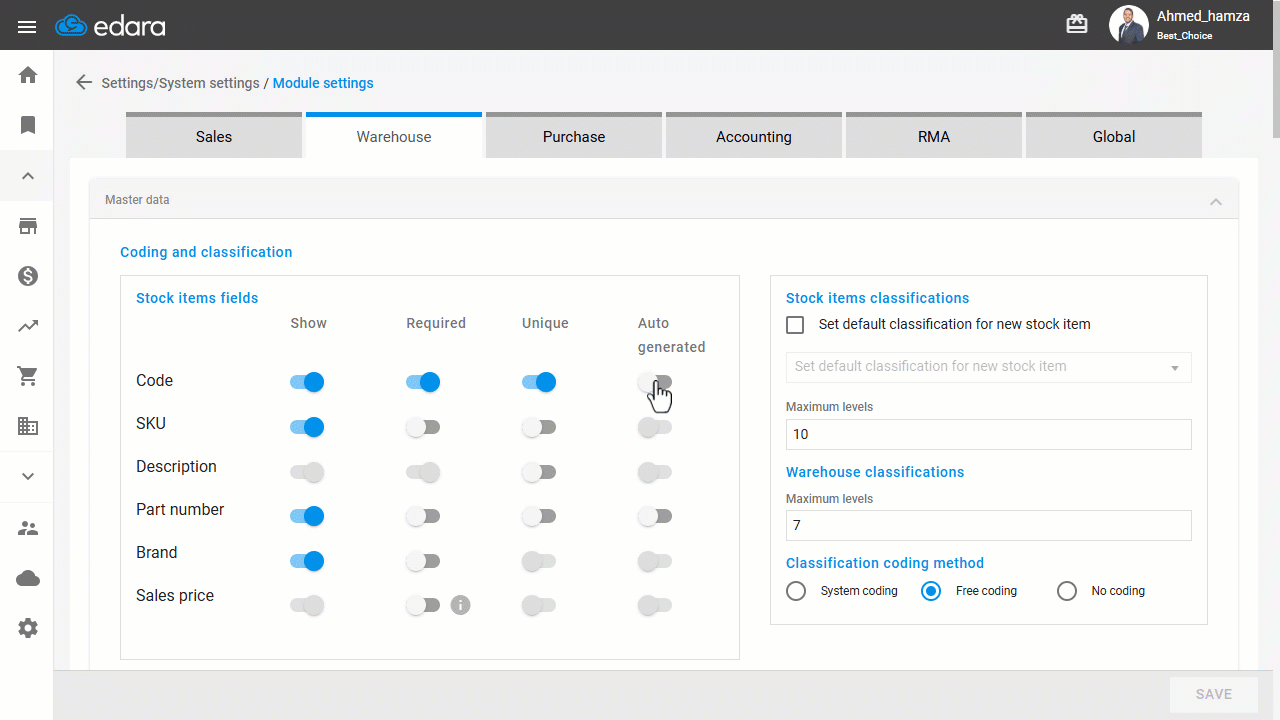
That’s a wrap on Edara’s October 2025 updates and there’s always more on the way.
As the business expanded, the challenge wasn’t just about handling more products or customers. It was about keeping operations consistent and organized for both wholesale and retail.
That’s when the need for a cloud-based system became clear. A system that could handle every process — from sales and purchases to inventory counts — accurately and on time.
And that’s exactly what “Edara” delivered. More than just software, it became a reliable partner, helping “Winner Brands” stay in control, move faster, and keep growing with confidence.
7 Branches, Hundreds of Products and One Clear View
“Winner Brands” has grown far beyond a single storefront. With seven branches and a diverse product lineup — laptops, printers, hard drives, RAM, etc. — the company serves both retail and wholesale customers across the electronics market.
Managing that kind of scale isn’t just about having more products or more customers. It’s about ensuring every sale, stock update, and transaction is part of a well-organized system.
That’s exactly what “Edara” brings to the table. With all branches connected to one cloud-based platform, the team can monitor inventory and sales in real time, maintain tighter control, and make faster decisions based on live data — not guesswork.
Serial Numbers: Full Traceability, Zero Guesswork
In electronics retail, tracking each unit isn’t a luxury — it’s critical for protecting profit margins and ensuring customer trust.
With “Edara”, every product at “Winner Brands” is linked to its unique serial number from the moment it enters the warehouse to the moment it’s sold. Every movement is logged, every detail is traceable.
Need to verify something during stocktaking? Handle a service request? Audit a supply chain issue? It’s all right there — accurate, instant, and searchable.
What used to be a logistical headache is now a competitive edge, thanks to real-time data that prevents errors before they happen.
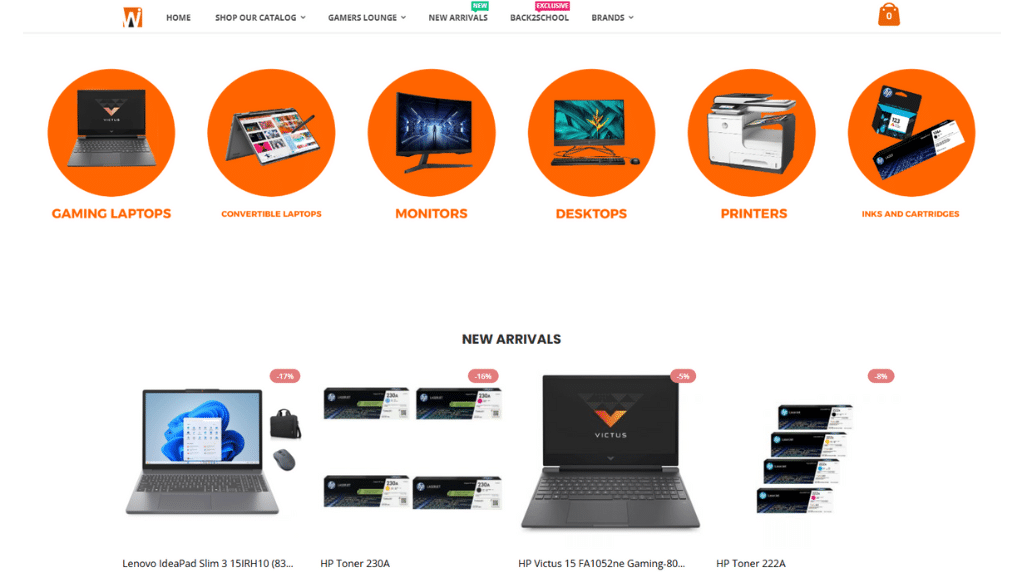
Financial Clarity Across All Branches
With “Edara”, numbers are no longer just viewed in total, each “Winner Brands” branch now has its own income statement, showing revenue and expenses separately.
At the same time, everything rolls up into a centralized financial dashboard, giving the leadership team a real-time view of company-wide performance.
This blend of detailed insights and big-picture visibility empowers decision-makers to track profitability per location, fine-tune operations, and keep financial stability well within reach.
Flexible Sales Operations With Built-In Accuracy
“Winner Brands” didn’t just use “Edara” for inventory and accounting, they leveraged it to tighten control across every step of the sales cycle.
Custom fields ensured the team captured key details like the sales rep’s name, delivery preferences, and more , with mandatory inputs that leave no room for missing data.
Meanwhile, approvals helped document each stage of wholesale orders directly in the system, reducing the need for manual checks and keeping the process clean and compliant.
The result? A fully structured sales flow that’s traceable, efficient, and built for scale — from quote to delivery.
Import Costs and Foreign Currencies: Real Costs, Clearer Insights
For a business like “Winner Brands”, dealing with international suppliers and multiple currencies is part of daily operations which makes cost accuracy critical.
With “Edara”, import expenses like shipping fees, customs, and bank charges are automatically allocated across individual items, so the true unit cost is always clear and reflected in the system.
And because foreign currency transactions are tightly linked to accounting in real time, the finance team can track profits with precision and analyze performance with confidence.
Looking Ahead: A Partnership Built for Growth
“Winner Brands’s” journey with “Edara” has never been just about using software, it’s a long-standing partnership that’s shaped how the business operates and grows.
From their very first store in 1987 to a thriving network of seven branches today, “Edara’s” cloud-based system has been there every step of the way, streamlining operations, revealing insights, and giving the team the clarity they need to make confident, growth-driven decisions.
]]>